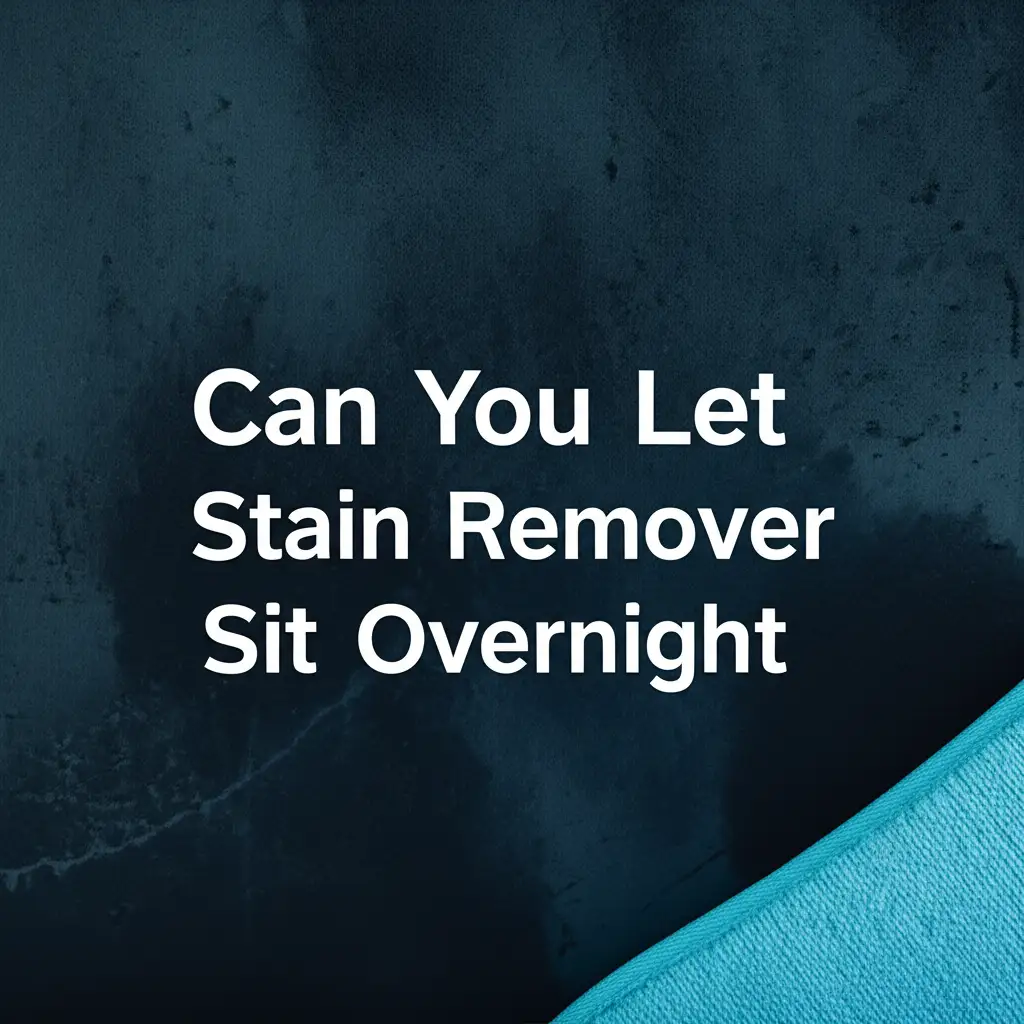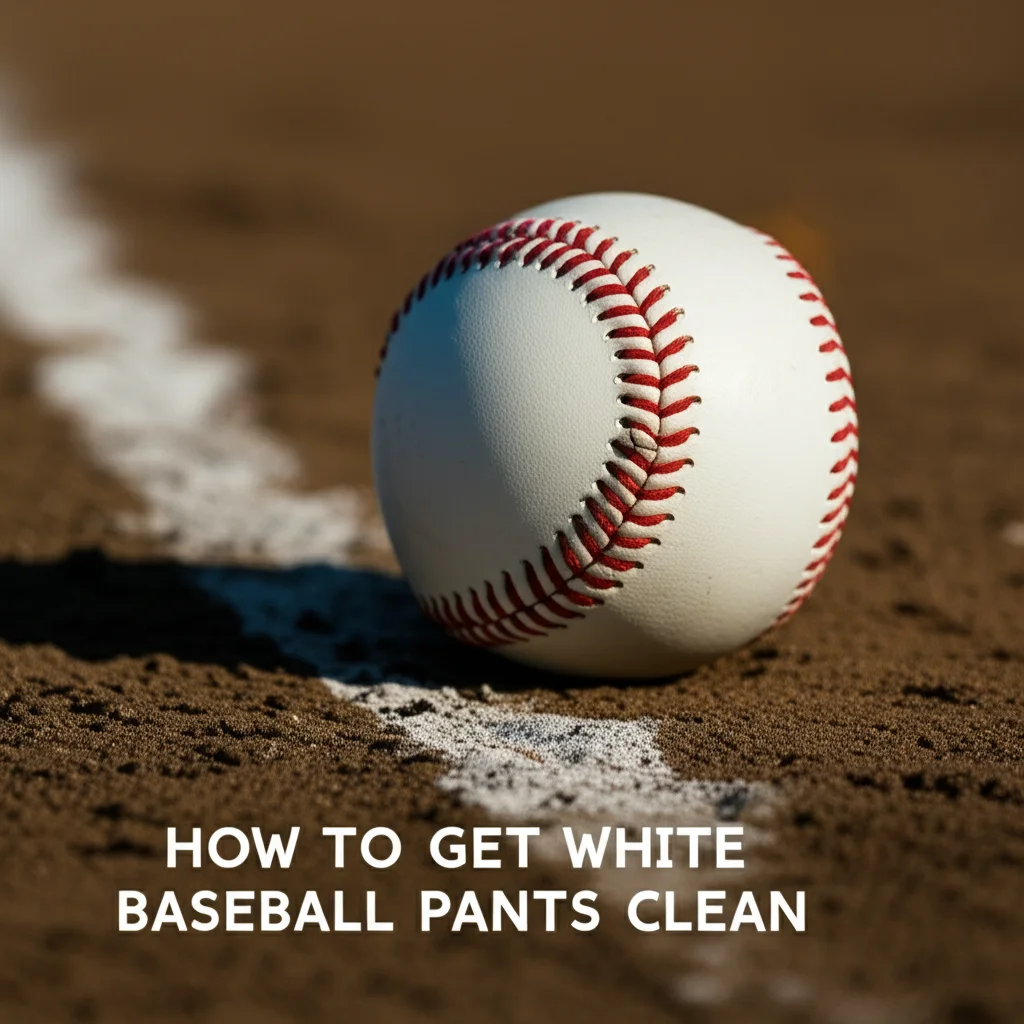· Todd Martin · Laundry Care · 18 min read
How To Clean White Coat

Mastering White Coat Cleaning: Your Ultimate Guide
A pristine white coat symbolizes professionalism and cleanliness. Doctors, scientists, and culinary experts wear them daily. Keeping these garments spotlessly clean presents a unique challenge. Stains from various substances are common occurrences. Over time, white coats can also develop an unsightly yellow tint.
Many people struggle with maintaining their coat’s bright white appearance. Traditional washing methods often fall short. They do not remove stubborn marks or reverse discoloration. This guide will show you how to clean a white coat effectively. We will cover pre-treatment, washing techniques, stain removal, and prevention of yellowing. You will learn the secrets to keeping your white coat looking brand new.
Takeaway
- Always check the care label: Understand your coat’s fabric type and recommended cleaning methods before starting.
- Pre-treat stains immediately: Address spills and marks as soon as they happen for the best removal results.
- Separate whites: Wash white coats only with other white items to prevent color transfer.
- Choose the right products: Select detergents and stain removers based on the type of stain and fabric.
- Prevent yellowing: Use proper water temperatures, avoid harsh chemicals, and dry coats correctly.
- Regular maintenance is key: Consistent cleaning and care extend the life and appearance of your white coat.
To clean a white coat, first read the care label to determine the fabric type. Pre-treat any visible stains using an appropriate stain remover. Wash the coat separately with a high-quality detergent designed for whites, using the recommended water temperature. Follow up with proper drying to maintain its pristine appearance and prevent yellowing.
Understanding Your White Coat Fabric and Care Labels
Every white coat is unique. Its cleaning needs depend on the fabric it uses. Cotton, polyester blends, and specialized materials like twill are common. Knowing your coat’s fabric content helps you choose the right cleaning method. It prevents damage and ensures thorough cleaning. Ignoring fabric guidelines can lead to shrinkage or discoloration.
The care label inside your white coat provides vital instructions. This small tag offers important details. It tells you about washing temperatures, drying methods, and bleaching warnings. Always check this label before you begin cleaning. It acts as your personalized cleaning manual. Following these instructions protects your investment.
Decoding Common Care Symbols
Care labels use symbols to convey information quickly. A tub with water indicates washing instructions. A triangle suggests bleaching information. A square with a circle is for drying instructions. An iron symbol shows ironing temperature. Learn these symbols to properly care for your coat. Many online resources offer charts to decipher these symbols. This knowledge is important for all fabric care.
For example, a solid triangle means you can use any bleach. A triangle with two lines means use only non-chlorine bleach. A crossed-out triangle means no bleach at all. These details protect your white coat’s color and fibers. Understanding these symbols prevents common laundry mistakes. Your coat will stay in better condition longer.
Initial Inspection and Pre-Treatment
Before washing, examine your white coat closely. Look for any visible stains, dirt, or spills. Addressing these issues before a full wash makes cleaning easier. Pre-treating stains stops them from setting into the fabric. It increases the chances of complete stain removal. This step is critical for maintaining a spotless coat.
For light dirt, a soft brush can remove loose particles. For specific stains, apply a targeted pre-treatment solution. Dab the solution onto the stain, do not rub it in. Allow it to sit for a few minutes according to product instructions. This action helps break down the stain’s compounds. It prepares the area for the main wash cycle. This simple step saves you effort later.
Essential Supplies for Effective White Coat Cleaning
Cleaning a white coat effectively requires the right tools. Having the correct supplies on hand makes the process smoother. It also ensures you get the best results. You will need more than just laundry detergent. Specific stain removers and whitening agents are often necessary. Using the right products prevents damage to your coat. It also helps to keep its professional appearance.
Gathering your supplies before you start is a smart move. This prevents interruptions during the cleaning process. A well-stocked laundry area simplifies white coat care. It ensures you are ready for any cleaning challenge. Being prepared helps maintain the longevity of your white coat. It keeps it looking fresh and bright.
Choosing the Right Detergent
Selecting the correct laundry detergent is foundational. For white coats, choose a high-quality detergent formulated for whites. These detergents often contain optical brighteners. They help make whites appear whiter and combat dullness. Look for detergents that are enzyme-based for tough protein stains. Detergents specifically designed for sensitive skin are also available.
Avoid using color-safe detergents on white coats. These detergents might lack the brightening agents needed. For heavily soiled coats, consider a heavy-duty detergent. Always measure the detergent accurately according to product instructions. Using too much detergent can leave residue. Too little might not clean effectively. Finding the right balance is important for clean white coats.
Natural Cleaning Agents You Can Use
Many natural products offer effective cleaning solutions for white coats. White vinegar is a versatile cleaning agent. It helps to break down stains and neutralize odors. Baking soda is another excellent option. It acts as a natural whitener and deodorizer. Lemon juice, when combined with sunlight, can also brighten whites. These natural solutions are often gentler on fabrics.
To use white vinegar, add half a cup to your wash cycle. For baking soda, sprinkle half a cup directly into the washing machine drum. For stubborn yellowing, a paste of baking soda and water can be applied. Lemon juice can be squeezed onto yellowed areas. Then let the coat dry in the sun. These eco-friendly options are a great alternative to harsh chemicals. They help you achieve a bright white coat naturally. Many people find these methods effective for general white item cleaning, similar to how one might clean dingy white clothes or even clean white shoes.
Step-by-Step Guide to Washing Your White Coat
Washing your white coat properly is key to its longevity. A good washing routine prevents premature wear and maintains its crisp appearance. The process involves more than just tossing it into the machine. Paying attention to details ensures the best results. This section will walk you through the proper steps for both machine and hand washing. It will help you achieve a spotless finish every time.
Consistent washing techniques protect the fabric. They also ensure thorough cleaning. Knowing when to machine wash versus hand wash is important. Each method has its benefits depending on the coat’s material and condition. Follow these guidelines to keep your white coat looking professional and clean.
Machine Washing Best Practices
Machine washing is convenient for most white coats. First, always wash your white coat separately from colored items. This prevents any color transfer. Use a laundry bag for coats with delicate buttons or embellishments. Select the appropriate water temperature. Hot water is generally best for white cotton coats to sanitize and remove dirt. Cold or warm water is better for synthetic blends to prevent shrinkage.
Choose a gentle or normal wash cycle, depending on the coat’s soil level. Add your chosen detergent, and consider an oxygen-based brightener for extra whitening power. Do not overcrowd the washing machine. Overloading reduces cleaning effectiveness and can damage the fabric. After the cycle finishes, promptly remove the coat. Leaving it in the machine can lead to mildew. These steps are crucial for effectively cleaning your white coat.
Hand Washing for Delicate Fabrics
Some white coats, especially those made from delicate materials, benefit from hand washing. This method offers more control and is gentler on the fabric. Begin by filling a clean sink or basin with lukewarm water. Add a small amount of mild detergent. Submerge the white coat completely. Gently swirl it around in the soapy water.
Focus on areas with visible dirt or stains. Lightly rub these areas with your fingers. Do not scrub harshly, as this can damage the fibers. After washing, drain the soapy water. Refill the basin with clean, cool water for rinsing. Rinse the coat several times until all soap residue is gone. Gently press out excess water. Do not wring the coat, as this can stretch or damage the fabric. Hand washing ensures a thorough yet gentle clean, much like careful washing required for white baseball pants that see a lot of dirt.
Tackling Common Stains on White Coats
White coats attract all kinds of stains. From ink and blood to coffee and food, marks appear frequently. Prompt action is crucial for successful stain removal. The longer a stain sits, the harder it is to remove. Different stains require different treatment methods. Knowing which approach to use saves time and effort. It also helps preserve your coat’s immaculate appearance.
This section provides targeted strategies. We will cover the most common types of stains found on white coats. Following these specific steps will increase your success rate. You can keep your coat looking spotless. Dealing with stains quickly is always the best policy.
Blood Stains: Quick Action is Key
Blood stains can be particularly challenging on white fabric. The key to removing them is immediate action and cold water. As soon as you notice a blood stain, rinse the area under cold running water. Do not use hot water; it will set the stain. Gently rub the stained area. If the stain persists, apply a small amount of hydrogen peroxide. You can also use a mixture of baking soda and water.
Dab the peroxide or paste onto the stain. Let it sit for a few minutes. Then, rinse thoroughly with cold water. Repeat this process until the stain fades. For older, dried blood stains, soak the coat in cold water with an enzyme cleaner. This type of cleaner helps break down the protein in the blood. After pre-treatment, wash the coat as usual. This method is often effective, similar to how one might clean white shoes with hydrogen peroxide for stubborn marks.
Ink and Pen Marks: Specific Solutions
Ink stains are notorious for being difficult to remove. The type of ink determines the best removal method. For ballpoint pen ink, rubbing alcohol or hand sanitizer can be effective. Apply a small amount to a clean cloth. Dab the stained area gently. Work from the outside of the stain inward to prevent spreading. Blot the ink as it transfers to the cloth.
For permanent marker or more stubborn ink, consider a commercial ink remover. Test the remover on an inconspicuous area first. This ensures it does not damage or discolor the fabric. Always follow the product instructions carefully. After treating the stain, wash the coat immediately. This helps to wash away any remaining residue.
Food and Grease Spots: Pre-Treat and Wash
Food and grease stains are common, especially in professional settings. Oily stains require a degreasing agent. For fresh food stains, scrape off any excess solid material. For grease spots, sprinkle cornstarch or talcum powder onto the stain. This powder absorbs the oil. Let it sit for at least 30 minutes, then brush it away.
Apply a dish soap or a specialized laundry pre-treater to the stain. These products are designed to break down oil and grease. Rub it gently into the fabric with your fingers or a soft brush. Let it sit for 10-15 minutes. Then, wash the coat in the hottest water safe for the fabric. This approach is effective for many types of stubborn dirt, similar to methods used to clean dirt off a white couch. Repeat if necessary, before drying.
Preventing and Reversing Yellowing in White Coats
Over time, white coats can develop an unattractive yellow tint. This yellowing diminishes their professional appearance. It can be frustrating, but it is often preventable. Understanding the causes helps you avoid this common issue. Reversing yellowing is also possible with the right techniques. Maintaining a bright white coat requires proactive measures and targeted solutions.
This section will explain why white coats turn yellow. It will also provide practical steps to prevent it. We will also explore effective methods for restoring your coat’s original whiteness. With consistent care, your white coat can stay brilliant for years. Keep your coat looking its very best.
Why White Coats Turn Yellow
Several factors contribute to white coats turning yellow. The most common cause is the build-up of detergent residue. If detergent does not rinse completely, it can accumulate and oxidize. This leaves a yellowish tint. Body oils and sweat also transfer to the fabric. Over time, these can stain and discolor the white material. Hard water, rich in minerals like iron, can deposit these minerals onto the fabric. This also causes yellowing.
Exposure to high heat, especially from dryers, can scorch fibers. This leads to a yellowish appearance. Certain chemicals, like chlorine bleach, can react with synthetic fibers. This reaction can cause yellowing instead of whitening. Even prolonged exposure to sunlight can sometimes cause specific fabric types to yellow. Understanding these causes helps you avoid them. This helps keep your white coat bright.
Effective Methods to Whiten a Yellowed Coat
If your white coat has already yellowed, do not despair. Several methods can help restore its brightness. One effective solution is to use an oxygen-based bleach. This is safer for most fabrics than chlorine bleach. Dissolve the oxygen bleach in warm water. Soak your yellowed coat for several hours or overnight. Then, wash as usual. This method is effective for many fabrics, much like restoring white leather that has yellowed.
Another traditional method involves bluing agents. These products add a microscopic amount of blue dye. This blue tint counteracts the yellow, making the coat appear whiter. Follow product instructions carefully. Too much bluing can turn the coat blue. Lemon juice and sunlight can also work wonders. Soak the coat in water with lemon slices. Then, hang it in direct sunlight to dry. The sun’s UV rays, combined with the lemon’s acidity, help bleach the fabric naturally. Repeat these treatments as needed for best results.
Drying and Finishing Your Clean White Coat
Proper drying and finishing are as important as washing. Incorrect drying can lead to wrinkles, shrinkage, or even renewed yellowing. A perfectly washed coat needs the right final touches. This ensures it is ready to wear and looks sharp. This section guides you through the best practices for drying and finishing your white coat. It helps maintain its professional appearance.
Attention to these post-wash steps completes the cleaning process. It prevents common laundry mishaps. You can ensure your coat remains crisp and ready for use. Learning these techniques saves you time on ironing. It also extends the overall life of your coat.
Best Practices for Drying
How you dry your white coat significantly impacts its look. Air drying is often the gentlest option. It reduces the risk of shrinkage and heat-induced yellowing. Hang your coat on a sturdy hanger immediately after washing. Ensure it hangs in a well-ventilated area. Keep it away from direct sunlight if you are concerned about specific fabric types reacting. Air drying helps maintain the fabric’s integrity.
If using a machine dryer, choose a low heat setting. High heat can set remaining stains. It can also cause shrinkage or yellowing of synthetic fibers. Add clean dryer balls to the load. They help circulate air and speed up drying. Remove the coat while it is still slightly damp. This reduces wrinkles. It also prevents over-drying and scorching the fabric. Follow the care label’s drying instructions closely for optimal results.
Ironing and Storing Your White Coat
Once dry, your white coat may need ironing for a crisp finish. Check the care label for recommended ironing temperatures. Cotton coats generally tolerate higher heat. Polyester blends require lower settings to prevent melting. Use a steam iron for the best results. The steam helps relax wrinkles and gives a professional look. Iron the coat inside out if you are concerned about shine marks.
Proper storage prevents wrinkles and keeps your coat clean. Hang your white coat on a wide hanger to maintain its shape. Avoid wire hangers, as they can cause shoulder bumps. Store it in a breathable garment bag. This protects it from dust and environmental contaminants. Keep your coat in a cool, dry place. Proper storage helps maintain its pristine condition between wears.
Maintaining the Pristine Look: Long-Term Care Tips
Keeping your white coat pristine goes beyond just washing. It involves a consistent care routine. Regular maintenance prevents major issues. It ensures your coat always looks its best. This section provides tips for ongoing care. These strategies will extend the life and brilliance of your professional garment. Implement these habits to simplify coat care.
A well-maintained white coat reflects positively on you. It shows attention to detail and professionalism. Small, consistent efforts make a big difference. Embrace these long-term care tips. Your white coat will remain a symbol of cleanliness and dedication.
Daily Habits for a Brighter Coat
Adopt a few daily habits to keep your white coat bright. First, treat spills and stains immediately. Carry a small stain remover pen or wipes for quick clean-ups. The faster you address a stain, the easier it is to remove completely. Second, change out of your white coat when doing messy tasks. This simple step prevents unnecessary soiling.
Third, air out your coat after each wear. Hang it in a well-ventilated area to reduce odors. This prevents the build-up of body oils and sweat. Fourth, consider having multiple white coats. Rotating them allows for less frequent, yet thorough, cleaning cycles for each one. This also extends their individual lifespan. Consistent, mindful use helps maintain their fresh appearance.
When to Seek Professional Help
While most white coats can be cleaned at home, there are times to seek professional help. If your white coat is made of delicate or specialized fabric, professional dry cleaning might be best. Examples include wool blends or coats with intricate embroidery. Care labels often indicate “Dry Clean Only.” Following this advice protects your coat.
For extremely stubborn stains that home remedies cannot remove, a professional cleaner is a good option. They have access to specialized chemicals and equipment. They can often remove set-in stains without damaging the fabric. If your coat has yellowed significantly and home methods fail, a professional might be able to restore it. They offer expertise in handling tricky whitening issues. For certain types of specialized cleaning, like how some people might consider professional services for cleaning a suede coat, the same principle applies to delicate white coats. When in doubt, a professional assessment is a wise choice.
Frequently Asked Questions About Cleaning White Coats
Can I use chlorine bleach on my white coat?
Using chlorine bleach depends on your coat’s fabric. Chlorine bleach is excellent for cotton fabrics, providing strong whitening and sanitization. However, avoid it on synthetic blends, silk, or wool, as it can cause yellowing or damage fibers. Always check the care label for bleach-safe symbols before use. If unsure, an oxygen-based bleach is a safer alternative for most fabrics.
How often should I clean my white coat?
The cleaning frequency depends on how often you wear your white coat and your activities. For daily wear in professional settings, cleaning weekly is advisable to prevent stain buildup and maintain hygiene. If worn less frequently, or only for short periods, a wash every two to three wears may suffice. Always clean immediately after any significant spill or exposure to contaminants.
What’s the best way to remove blood stains from a white coat?
The best way to remove blood stains is to act fast. Rinse the stained area immediately with cold water; hot water will set the stain. For persistent marks, dab the stain with hydrogen peroxide or a paste made from baking soda and water. Let it sit briefly, then rinse again with cold water. Repeat until the stain fades, then wash the coat as usual.
My white coat is still dingy after washing; what can I do?
If your white coat remains dingy, try rewashing it with an oxygen-based brightener or a scoop of baking soda added to the wash cycle. Ensure you are washing it separately from any colored items. You can also try soaking it in a solution of warm water and oxygen bleach overnight. For persistent dinginess, consider a bluing agent to counteract yellow tones. For more tips on general white clothes, check out how to clean dingy white clothes.
Can I dry clean a white coat?
Many white coats, especially those made from specific blends or with intricate designs, can be dry cleaned. Check your coat’s care label for “Dry Clean Only” instructions or a dry cleaning symbol. Dry cleaning is an excellent option for delicate fabrics that might shrink or get damaged in water. It is also good for removing oil-based stains that water alone struggles with.
How do I prevent my white coat from shrinking?
Prevent white coat shrinkage by washing in cold or lukewarm water, especially for synthetic or blended fabrics. Avoid high heat in the dryer; air drying is always the safest option. If machine drying, use a low heat setting and remove the coat while still slightly damp. Always follow the specific temperature recommendations on your coat’s care label.
Conclusion
A clean white coat projects professionalism and confidence. Maintaining its crisp, bright appearance does not need to be a difficult task. By following the detailed steps in this guide, you can ensure your white coat always looks its best. We have covered everything from understanding fabric care labels to tackling stubborn stains. You also learned how to prevent and reverse yellowing. Proper drying and finishing complete the comprehensive care routine.
Remember, consistent care is key to longevity. Addressing spills immediately and choosing the right products make a significant difference. Your commitment to proper white coat cleaning will reflect in its pristine condition. Keep your white coat spotless and sharp.





